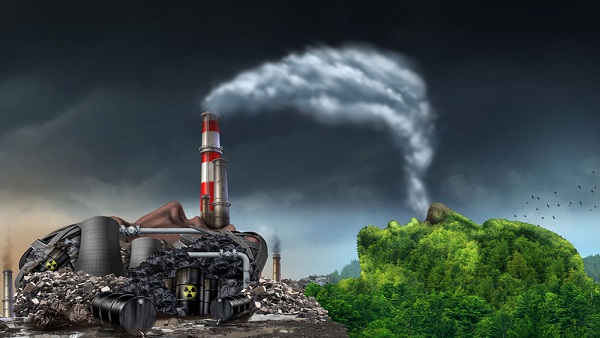How Do Incinerators Generate Electricity?
Home » Informational » How Do Incinerators Generate Electricity?
Waste is an inevitable byproduct of human activity. As societies produce more, they also create more trash. Landfilling all this waste is problematic due to space limitations and environmental hazards.
Incineration offers an alternative for managing waste responsibly while capturing value from what would otherwise go to waste. This article explores what incinerators are, how they work, and their benefits and downsides. Read on to unlock the power within the waste we produce daily.
For a full range of waste-to-energy incinerators, visit worldwide delivery.
What is Waste Incineration?
Waste incineration is the controlled burning of material at high temperatures. It aims to reduce waste volumes while also generating useful outputs like electricity. Incinerators convert the combustible materials in waste into heat, gas, steam, and ash residues. Modern incinerators operate at 850-1200°C to facilitate complete burning and heat recovery.
Waste Streams Used in Incineration
Incineration plants process mixed household waste, commercial waste, and, in some cases, hazardous industrial waste. Medical wastage also gets sterilized through incineration. The composition varies across regions and income levels.
Generally speaking, higher-income areas produce more plastics, paper, metals, and glass while developing countries have higher organics. Pre-treatment steps like recycling and composting can reduce the share of non-combustibles. The remaining high-calorific waste gets utilized for energy recovery.
Main Components and Process Flow
Waste incinerators consist of a tipping hall, furnace, heat recovery section, flue gas treatment, and ash handling.
It gets stored, sorted, and then fed into the combustion chamber. Here it gets burnt at 850-1200°C, producing heat combustion gases and ash residues. Primary air drawn by fans supplies oxygen to support combustion while secondary air injections control temperatures inside.
As the hot flue gas passes through boilers, the heat gets transferred to water pipes, producing high-pressure steam. This steam then spins turbines to generate electricity. Air pollution control systems clean the flue gases further before release into the atmosphere via the stack. systems include scrubbers, fabric filters, and neutralization systems.
The ash gets discharged through bottom extractors for periodic disposal while fly ash collects in hoppers.
Heat Recovery and Energy Generation
Heat recovery is key to the efficiency benefits of incineration. Typical plants convert 20-27% of the calorific value in waste into electricity. The remaining heat also gets utilized for district heating systems. Overall fuel utilization can reach up to 96% in some European plants using combined heat and power. This makes incineration far better than just landfilling where methane emissions occur without any energy capture.
Emissions Control Systems
Due to the heterogeneous nature of waste, controlling air emissions is critical for incinerators. Combustion generates CO2 along with pollutants like dioxins, furans, NOx, SOx, hydrogen chloride, and particulates.
Using APC systems like selective non-catalytic NOx reduction, wet scrubbers, activated carbon injection, and baghouse filters helps minimize environmental impacts significantly. Modern plants can reduce dioxins by up to 99% and match the performance of fossil fuel plants.
Ash Management
Incineration reduces waste volume by about 90% while also generating ash residues. Bottom ash forms 10-20% by weight of input waste while fly ash is 1-5%. Bottom ash generally gets reused for construction materials.
Fly ash requires treatment to immobilize heavy metals before landfilling to avoid groundwater contamination. With proper protocols, ash utilization can reach 100% as seen in countries like Japan.
Cost Considerations
Setting up incineration plants requires extensive investment, with costs ranging from $100-500 million for a standard 250 TPD plant. Much of this goes towards emission control systems.
However, low operating costs due to these processing fees and energy sales revenues combined with the recovery of metals lead to viable economics in the long run. This also creates jobs and local heating benefits.
Environmental Impacts
While modern incinerators are far cleaner than old ones, concerns about long-term emissions of trace pollutants remain. Even low quantities of dioxins, furans, and mercury compounds can bio-accumulate. Studies have also linked ultra-fine particulate matter to increased morbidity. Proper monitoring and enforcement of standards are essential to avoiding issues observed earlier.
When combined with recycling programs, incineration improves lifecycle environmental performance compared to direct landfilling. The use of CHP maximizes energy utilization while closing the loop on ash residues lowers impacts further following circular economy principles.
Growth of Waste-to-Energy
With a rising focus on resource efficiency and energy security, waste-to-energy growth has accelerated. Global capacity exceeded 282 million tonnes showing 50% growth over a decade. Western Europe, China, Japan, and India had over 95% share demonstrating wide replicability across income levels.
In Europe, over 128 million tonnes gets treated annually replacing over 26 million tonnes of coal equivalent thus lowering CO2 emissions by nearly 50 million tonnes.
Conclusion
- Incineration provides a technological solution for managing waste responsibly while generating electricity
- Heat recovery for cogeneration improves fuel utilization and economics significantly
- High capital costs get offset with revenues over project lifetimes
- Modern pollution control systems minimize toxic emissions to near fossil fuel plant levels
- Lifecycle impacts are lower compared to direct landfilling coupled with recycling
- The share of waste-to-energy continues rising across the world given these sustainability benefits.
Read More:


